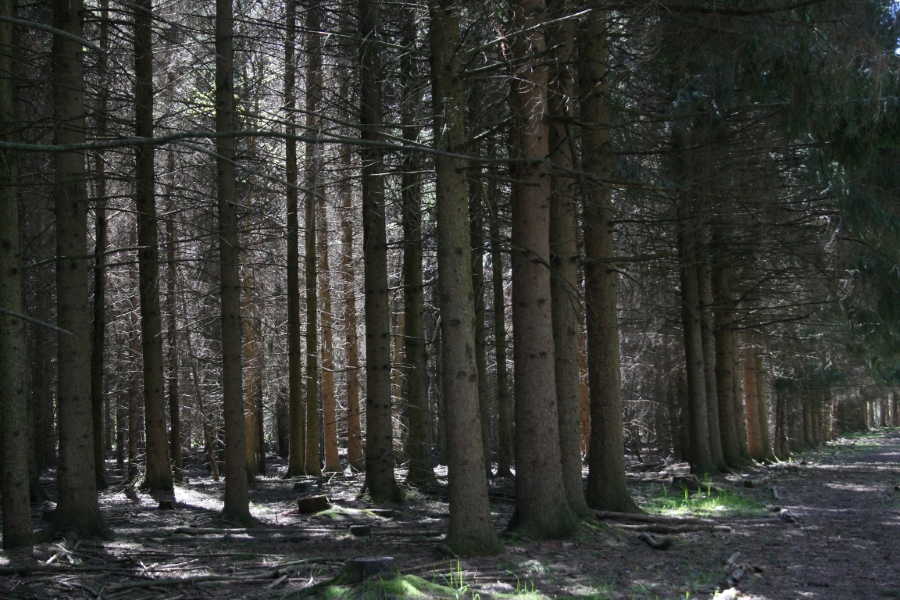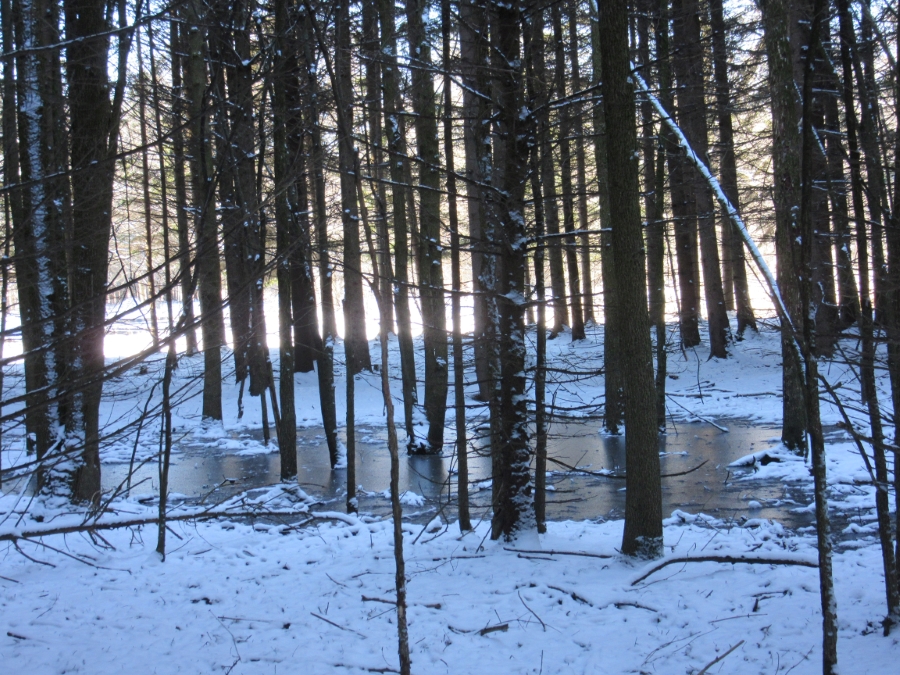In this section:
Forest Management Plan
Donate to Norbert Rich School Forest (Wish List Items)
Forest Management Plan
There are 6 main forest stand types on the property:

|
| Photo By: Dana Hartel |
P1 – Red Pine/White Spruce (3 acres) – mostly red pine 5-7 inches diameter with a few white spruce 4-5 inches diameter. Planted in 1972 then thinned in 2006, this stand is poorly growing due to wet and heavy clay soils that have higher pH levels. Red Pine grows best in sandy, well drained, slightly acidic soils. After the 2020 thinning, a portion of the stand can be under planted with a mixture of native hardwood trees such as swamp white oak, silver maple, bur oak, sugar maple and black cherry which are more suited to the soil conditions.
P2 – Red Pine (14 acres) – medium, pole sized timber planted in 1970 then thinned in 2006, this red pine is growing poorly due to wet, heavy soil conditions. This will shorten its life span by approximately 50 years. Under plant native hardwood species after the 2020 thinning.

|
| Photo By: Dana Hartel |
P3 – White Spruce/Norway Spruce (8 acres) – planted over a five year period from 1967-1971, these trees are better suited for the soil conditions than the red pine. The stand was thinned in 2006 and is well stocked. Thin this stand of trees again in 2020.
P4 – White Spruce (5 acres) – Well stocked white spruce intermixed with white cedar at 5 inches in diameter. This stand was planted in 1987 and will need to be thinned in 2020.
 |
| Photo By: Dana Hartel |
P5 – Swamp Hardwood (10 acres) – Primarily green and black ash, silver maple, basswood, burr oak and swamp white oak this is a natural stand originating in 1949. Because of the wet soils, the tree growth rate is slow. The threat from the invasive insect, Emerald Ash Borer is a concern as well as the prevalence of Common Buckthorn found in the stand. In 2020, a thinning will occur depending on the health of the ash trees.
P6 – Grass Opening (3 acres) – Several non-productive forest trees including apple, crabapple, willow, cottonwood and silver maple. Continual, periodic mowing to keep the brush and trees from growing will be necessary to provide access to the pond for an outdoor classroom area.
Continual timber harvesting of mature trees will be managed as necessary at approximately 15 year intervals with the next cut scheduled for 2019-2020 depending on the growth and health of the forest. Replanting efforts will be made to encourage appropriate native species growth to maintain a sustainable supply of wood and forest products.
Invasive species removal - some of the non native invaders found on the premises include Autumn Olive (Elaeagnus umbellata) and Common Buckthorn (Rhamnus cathartica). Both species grow and reproduce quickly to create a dense shade that hinders the growth of sun loving plants thus preventing understory regeneration in the forest. Both physical removal and chemical treatments may need to be used to control these species.
The Blue Spruce in the forest are infected with a needle cast disease caused by a fungus called Rhizosphaera, (Rhizosphaera kalkhoffii) causing the needles to brown and fall off near the bottom of the tree and working its way upward. Continuous monitoring and removal of infected branches and/or trees will be necessary.
Efforts will be made to provide wildlife habitat by providing native grasses & legumes for food, constructing brush piles for wildlife shelters and monitoring populations of overabundant species. Hunting is not permitted in the Norbert Rich School Forest.
The development and maintenance of recreational trails throughout this woodlot to be used for logging/firewood & other wood products, cross country skiing, snowshoeing, hiking and various nature studies will be a priority. ATV’s, Snowmobiles & other personal motorized recreational vehicles will not be allowed on the property.
Norbert Rich Wish List Items
The following list of items have been identified as items of need at the Norbert Rich School Forest Property. For more information on any of these needs/items please contact Pat Kolby at 920-582-5810 ext. 1813